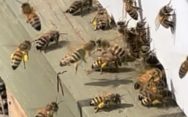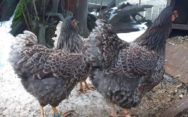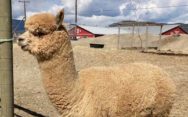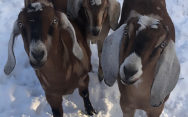Degenerative Myelopathy (DM)
This DNA test can be tested on any breed, but some breeds show a clear genetic risk for producing the disease. The University of Missouri is currently determining if the NSDTR is a breed at risk by examining spinal cords form deceased dogs that exhibited symptoms of the disease. At this time the required evidence of association between the genetic mutation and the actual spinal cord evaluation has only been proven on the breeds listed on the OFA site.
Josie’s story:
It is with a heavy heart that I post the following news. I have just found out that one of the dogs from our Holly (Berdia’s Offshore Holly) and Spirit (Foxgroves Celtic Spirit) is both symptomatic and affected (per OFA). We are all devastated by this news. Josie (Marshlands Bluewater Josie) is just 8 years old. The following is what her owners sent to me. It is my hope that through Josie we can all learn and be aware of this disease. We know that both Holly and Spirit were carriers. This all happened as Sue Kish posted the results for some of her dogs. I will be honest I didn’t even think about DM until I saw Sue’s post. I immediately contacted Ian and Andrina. Had it not been for this information I don’t know if I would have made the connection.
From Andrina….
We have video of Josie from January 2014 in the park leaping in the air for a ball – no symptoms.
March 15 – First noticed some stiffness in Josie’s rear legs. Very minimal, brushed it off as over-exertion.
April 2 – First visit to vet. Had noticed Josie was losing her balance when turning corners in the house – with a lot of ice in the garden over this winter we were assuming pulled muscle or some other injury caused from being overly rambunctious. No mental change, even with balance being off very keen to chase a ball. Vet did a simple neurological test when she saw her, she failed when turning back paws over onto their knuckles, she didn’t right them, she also didn’t respond to pinching of the skin on her rear right hock or pinching of the outside toes on the rear feet. She would eventually right the left rear foot when knuckled, but would turn the right rear to correct at all at. We were referred to a specialist neurologist at this point. Standard vet apt fee of $80.
April 3 – Neurologist took full history and ran through the neurological tests as well as watching her gait while walking. She was exhibiting some ataxia at this point – crossing her rear paws across each other as she walked. Given neurological symptoms an MRI was suggested to see if there was pressure in the back that would be causing nerve damage. MRI was done the same day, some minor compression was observed in the MRI, and a spinal tap was taken at the same time to check for any inflammation. Seeing the minor compression a course of steroids was prescribed. Results from the spinal tap came back clear with no signs of inflammation. While taking the course of steroids Josie was on strict bed rest and taken outside on leash for bathroom breaks only. Aprox $4000 for all tests, sedation vet fees etc.
April 15 – Follow-up post course of steroids sees no improvement in gait or neurological symptoms. Decision was made to not run another course of steroids. I’ve attached the full results from the specialist from this visit. Standard vet apt fee of $80.
In short walks after this point we could hear the back nails scraping over the pavement as Josie walked. At a faster gait she was better. She was still exhibiting ataxia and favouring her right rear – she would sometimes hop so as to not use her right rear while moving at a faster pace or when going down a couple steps. We’re routinely carrying her up and down stairs in the house at this point and discouraging her from jumping up or down from bed/sofa. Most of the house has stone or hardwood floor, when standing or sitting her right rear paw will start slipping outwards and she doesn’t correct this – we’ve since put down a lot of mats and yoga mats around the house and she’s keeping her grip better on those. She does still appear to have a lot of muscle strength in her rear legs though. Manually manipulating her right rear is very stiff and she resists to this movement. Right rear also seems to roll outwards – supination. Some sensitivity does appear to have returned since the first vet visit though, when knuckling the rear paws, she corrects the rear left almost immediately, and will correct the right eventually now. She also responds to tickling of the feet when lying down and pulls the feet away. She doesn’t appear to respond to toe pinching on the right rear toes whereas she does on the left rear.
April 21 – Follow-up with regular vet to address what our next course of action should be. While vet was adamant that Duck Tollers do not get DM, given what we understood about Josie’s parentage we ordered the test from OFFA. Suggestion to start on Vitamin E from the vet. No vet fees for this visit.
Testing kit received week of April 28, took swab and sent it back immediately – received by OFFA May 12.
May 20, 2014 – DM result AT RISK.
It is encouraged to send spinal cords of tollers considered suspect to University of Missouri in order for a definitive link to be established between our breed and this disease.





